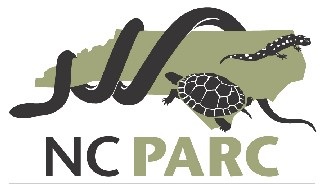
Sistrurus miliarus
VENOMOUS
Description: Pigmy rattlesnakes are aptly named because they are the smallest species of rattlesnake in the United States. This snake is usually dull gray with a row of dark spots running down the center of its back and along its sides. Individuals from Hyde, Beaufort, and Pamlico counties have a red or pinkish background color. The pigmy rattler will sometimes have an orange stripe running the length of its back. The rattle is so small, that its “buzz” sounds like a small insect, oftentimes barely heard. The young, like copperheads and cottonmouths, have yellow-tipped tails that they use to lure prey.
Feeding/diet: Pigmy rattlers feed on lizards, mice, and frogs and will sometimes eat other small snakes.
Habitat/range: Pigmy rattlers are rare but can be found in the southeastern Coastal Plain and in the Sandhills of North Carolina in pine flatwoods and scrub oak habitats. They have also been found at Crowder’s Mountain State Park in Gaston County.
Reproduction: Pigmy Rattlesnakes give birth to 3–9 babies in late summer or early fall.
Miscellaneous: Pigmy rattlers can be active during the day or at night. However, these snakes are so small and so well camouflaged that they are rarely seen. When disturbed, pigmy rattlers generally remain still and try to rely on their camouflage. If threatened and unable to escape, they will bite to defend themselves. Because of its small size, the pigmy rattler’s bite is generally considered less serious than that of their larger relatives. However, if bitten, one should still seek medical attention as soon as possible.







